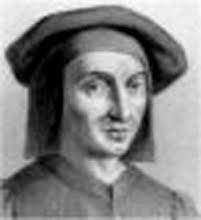March 27 2017. Cabezón and Haydn. Antonio de Cabezón, one of the most important keyboard composers of the Spanish Renaissance, was born on March 30th of 1510 (or at least that is traditionally assumed to be his birth date). The year 1510 makes him the exact contemporary of Flemish composers Tielman Susato and Jacob Clemens non Papa; on the Spanish music timeline,  Cristóbal de Morales was five years older and Tomás Luis de Victoria - a generation younger. Little is known about Cabezón: he was born in a small town in northern Spain not far from Burgos, and was blind from childhood. In 1526 he entered the service of Queen Isabella of Portugal, wife of Charles I, king of Spain, who as Charles V, the Holy Roman Emperor, became the most powerful ruler in Europe. At the court, Cabezón was employed as an organist and clavichord player. In 1538 he was appointed the chamber musician to Charles himself. Later, Cabezón became the music teacher to Prince Felipe, the future king of Spain, and accompanied him on his travels to Italy, the Netherlands, Germany and London. Cabezón’s music influenced many composers, especially English ones, such as Thomas Tallis and William Byrd. Here’s is a short piece by Cabezón called Pavana con su glosa, it’s performed by the ensemble Capella Virelai. And here is one of his Quatro favordones, variations that so affected his English audiences. Hamonices Mundi is conducted by Claudio Astronio.
Cristóbal de Morales was five years older and Tomás Luis de Victoria - a generation younger. Little is known about Cabezón: he was born in a small town in northern Spain not far from Burgos, and was blind from childhood. In 1526 he entered the service of Queen Isabella of Portugal, wife of Charles I, king of Spain, who as Charles V, the Holy Roman Emperor, became the most powerful ruler in Europe. At the court, Cabezón was employed as an organist and clavichord player. In 1538 he was appointed the chamber musician to Charles himself. Later, Cabezón became the music teacher to Prince Felipe, the future king of Spain, and accompanied him on his travels to Italy, the Netherlands, Germany and London. Cabezón’s music influenced many composers, especially English ones, such as Thomas Tallis and William Byrd. Here’s is a short piece by Cabezón called Pavana con su glosa, it’s performed by the ensemble Capella Virelai. And here is one of his Quatro favordones, variations that so affected his English audiences. Hamonices Mundi is conducted by Claudio Astronio.
Franz Joseph Haydn, born on March 31st of 1732, was one of the greatest, if sometimes underappreciated, composers ever. We’ve written about him many times, and will write more. Haydn was extremely prolific, writing in every musical genre known in his time. He composed 104 symphonies, more than 60 quartets, 62 piano sonatas, trios, concertos, wonderful cantatas and even operas, written for Esterházy’s enjoyment. In 1790, Prince Nikolaus Esterházy died; his successor, Prince Anton wanted to save money and wasn’t interested in music as much as his father. He formally retained Haydn at a smaller salary but allowed him to travel, something Haydn was longing to do for quite some time. Johann Peter Salomon, an impresario and a fine violinist, arranged a trip to London, where Haydn’s music was very popular. Haydn, travelling with Salomon, left Vienna on December 15th of 1790. They crossed through Germany and arrived in Calais, France. On New Year’s Day of 1791 they sailed to Dover. “I stayed on deck during the entire crossing so as to gaze my fill of that great monster, the ocean,” he wrote in a letter. Haydn had never seen the ocean before. They arriving in London on January 2nd. Haydn was welcomed with great enthusiasm. The papers printed news about him, he was invited to many noble houses, the Prince of Wales (the future King George IV) became a patron. Haydn found many pupils for his piano lessons, again mostly from amoung the nobility. His music was widely performed, and of the three latest symphonies, nos. 90 through 92, the last one became a favorite. London, the largest city in Europe, was full of musicians from different countries, from the French escaping the Revolution to the ever-migrating Italians and Germans. The orchestras were large, larger than in Vienna or in Eszterháza. At the beginning of Haydn’s employ, the orchestra at Eszterháza consisted of just 14 players, which was quite enough for the smaller halls of the palace. Later the number grew to about 25. In London, orchestras were at least 40 players strong, and sometimes consisted of 60 musicians. Even though Haydn didn’t have much time to compose, during the following year he wrote six symphonies, nos. 93-98, all of amazing quality. We know them now as his “London symphonies.” Here’s Carlos Kleiber conducting the Vienna Philharmonic in a live 1982 recording of Symphony no. 94, “Surprise.”
| Source: | https://www.classicalconnect.com/node/12077 |
| Website: | Classical Connect |